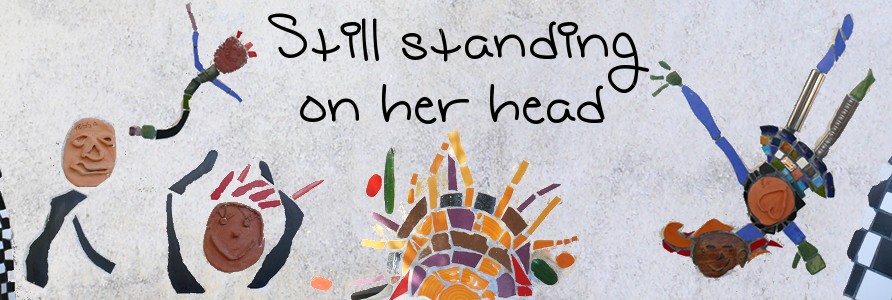We lingered a little by the shores of Loch Ard to take a few photos - I had spotted these boat houses in passing on several occasions. This is one of my favourite photos from the trip.

At Aberfoyle we turned south and then west to Balloch, where we headed north again, up the A82 which runs up the west side of the "bonnie, bonnie banks of Loch Lomond". The south end of Loch Lomond, from what I could see, is quite picturesque with many islands. The frustration, however, is that the traffic tears along the A82 and, like many roads in the UK, there are few places to stop. We took a side loop road that passes through the villages of Aldochlay and Luss - at Aldochlay there was a layby which appeared to have a good view of the islands, and small boats moored nearby, but it was already full of parked cars. Eventually, back on the main road north of Luss, we found a layby and hazarded crossing the road where we found a narrow path through the weedy bank to the shore. By now, however, we had passed all the islands and I thought it was a rather ordinary stretch of water.
Half way up Loch Lomond we had a choice. We could continue in a more or less northerly direction, passing through Glen Coe, which the guide book describes as "spectacularly beautiful". Or we could take a longer route, heading westward to the sea, and wind our way round the coast of Argyll. We chose the coastal route. Only a mile or so separates Loch Lomond from the sea, a low pass (hardly a rise at all) which the Vikings used to drag their long boats over. "Loch" in Scotland refers to both inland lakes, or long coastal inlets. We reached Loch Long, a sea inlet, and shortly left it again to climb up Glen Croe in the Argyll Forest Park to the summit, the aptly named "Rest and be Thankful" Pass.
View of Glen Croe from the summit:

The road then descends down Glen Kinglas to Loch Fyne, another sea loch. The picturesque town of Inveraray is on the northern shore of Loch Fyne. It is a planned village, built by the Duke of Argyll in the 1700s so that the villagers wouldn't encroach too closely on his restored castle.


We travelled southwest down the northern shore of Loch Fyne, then turned north at Lochgilphead, away from the coast for a while, and stopped at Kilmartin, an area rich in ancient and prehistoric monuments. The church here has an interesting collection of gravestones, the Poltalloch stones. They were carved by a group of sculptors working in the late 14th and 15th centuries.


There is a small archaeological museum at Kilmartin, which was showing an audio visual but we decided not to stay, as we had plenty of ground still to cover that day.
The road continues north, alternating between the shores of sea lochs and inland stretches, through Oban. Just north of Oban we stopped to visit Dunstaffnage Castle. The link has quite a bit of information about the castle's extensive history.


There is also a marine laboratory and small harbour nearby:

We had no more stops planned, but when we caught a glimpse of Castle Stalker we had to stop and take photos. This castle is in private hands and only open to the public on a few dates each year - the link gives details.

By a little before 6.30 we were heading into Fort William, with bed and breakfasts lining the main road. After finding a place to stay, we headed into the town, inspected all the restaurants and chose an Indian restaurant for dinner.
Fort William was full of climbers. Apparently there had been a charity event at Ben Nevis that day, with around 300 making the climb. The three young women at the next table had hiking poles - I gathered they had had some drama, so I didn't think it would be kind to suggest that any mountain that can be climbed with a hiking pole isn't a real mountain! We did, however, find the UK very flat by New Zealand standards. (Mount Cook in New Zealand is about three times as high as Ben Nevis, Britains's highest mountain. Everest, of course, is a lot higher than either!)



1 comment:
The castle on the island looks so isolated and yet beautiful...
Post a Comment